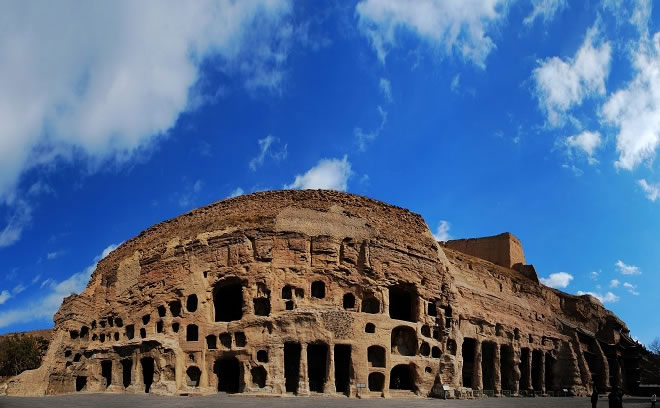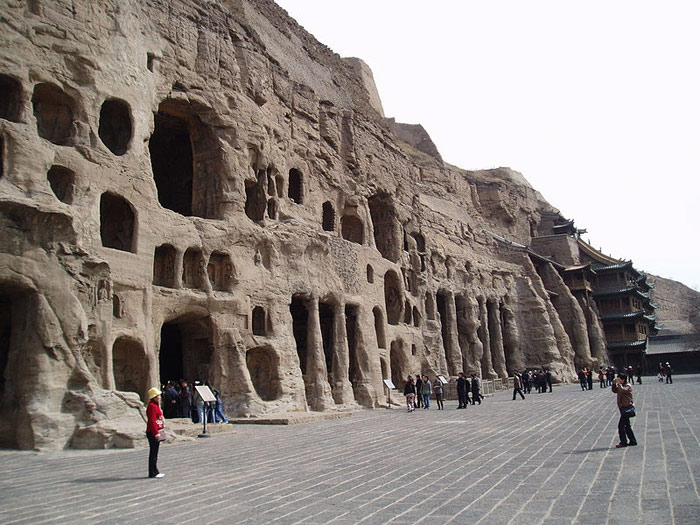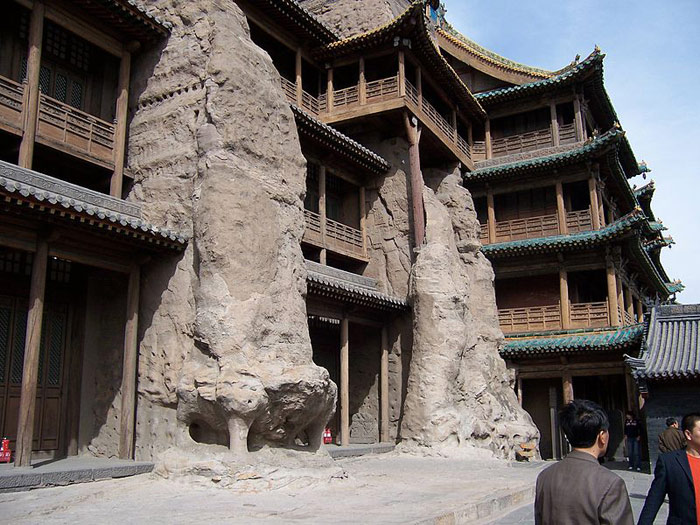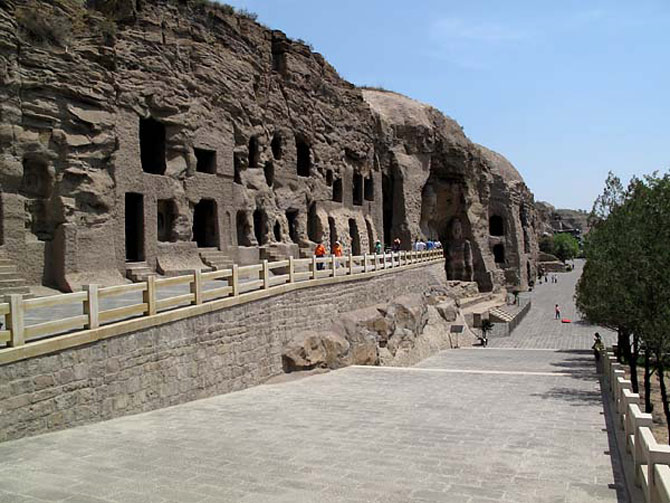Van Cuong stone cave
The United Nations Science, Education and Cultural Organization has recognized China's Van Cuong Stone Cave as a World Cultural Heritage in 2001.

The Van Cuong Cave is located south of the foot of Yuzhou Mountain, 16 kilometers west of the Chinese city of Datxi, Shanxi Province. The Van Cuong cave began to be carved into the second year of Northern Wei (453) and was completed in 494. When Wei's court left the capital to Luoyang, the statue of the statue lasted until the middle of the The year of Quan Quan (520-525) has just been completed. Van Cuong stone cave is carved into the mountainside, about a kilometer long from east to west, with rich and sharp sculptures, majestic.

So far in Van Cuong, there are 45 main caves, 252 small caves, 51,000 stone statues . In it the highest statue has a height of 17 meters, the smallest statue has less than 10 cm. The statues of Bodhisattva, athletes and celestial beings are very lively and lively. The sculpted lines on the body of the tower are very sophisticated and meticulous. This sculptural architecture is due to the succession of the Qin Dynasty and the Han Dynasty. The sculpted statues of the latter period have the style of Sui and Tang houses. Along with Mac Cao cave, Longmen cave, Van Cuong cave is considered "the three largest caves of sculpture ". This is also a famous treasure of precious stone art in the world.


Van Cuong's way of shaping and sculpting stone is very majestic and rich in style and content. This is the leading stone carving art work in that period of China. Based on the excavation period, it can be divided into three different periods, the first, the middle and the last. Because of being composed in different periods, the shapes of the statues are also different. Dan Dieu Cave was carved in the early period of rustic style of the western region. The stone statues, caves carved in the middle period are famous by their delicate contours, the complex and luxurious shaping of the statues of the statues. In the later period, the scale of the cave was smaller, but the stone statues in the cave were more sophisticated with proportion of balanced people and delicate, thin faces. In addition, the cave also retains the statues with the shape of dancing and playing . these statues also express Buddhist thought and reflect the social life of the Northern Wei period.



Large stone sculptures of the Van Cuong cave complex
The Buddha statues in Van Cuong cave have recorded historical vestiges of Indian and Central Asian Buddhist art developed into Chinese Buddhist art . Many styles of sculptures in the Van Cuong cave have learned and merged and then gradually turned into a distinctive shape, a turning point of Chinese statues and Buddhist art. Buddha statues in the Mac Cao cave and Longmen cave are all influenced by the style of Van Cuong cave.


A few images inside the caves of Van Cuong Cave Heritage
Van Cuong Cave Complex is the beginning of Chinese cave art . Van Cuong stone cave in the middle period also appeared sculptures of the architecture of the palaces. On the basis of these architectures has developed into architectural art, sculpture of Buddhist style is very typical of China.
Not only unique architecture, rich sculpture, Van Cuong stone cave is also the basis for studying and learning about the culture and history of Buddhism in China as well as in Asia.

Van Cuong Cave Complex is recognized by Unesco under the following criteria: (i), (ii), (iii), (iv).
Criterion (i): Population of statues in Van Cuong caves is an artistic cave masterpiece of Buddhism in China.
Criterion (ii): Art caves in Van Cuong represent a successful fusion of sculpture art from South and Central Asia with Chinese cultural traditions.
Criterion (iii): China's strength and belief in Buddhism is vividly illustrated in caves in Yun Gang.
Criterion (iv): Buddhist tradition is clearly reflected in Van Cuong caves, besides this is also a strong development of stone sculpture art.
- Longmen Stone Cave - World Cultural Heritage in China
- Macao stone cave - China
- Detecting traces of people near Con Moong cave
- Revealing techniques for manufacturing ancient weapons from 77,000 years ago
- The location for drawing stone paintings is chosen based on music
- Many discoveries at the archaeological site of Con Moong cave
- Scary people into the giant cave, the hiding place of the pythons in Son La
- Discovering vestiges of caverns in Tuyen Quang
- Famous caves in the world
- The oldest stone masks in the world
- The world's largest lion species was eradicated by the ancient people
- Detecting many archaeological relics in Dong Van stone plateau
 Suzhou classic bonsai garden - China
Suzhou classic bonsai garden - China Chau Nguyen Dynasty
Chau Nguyen Dynasty Thai Son Mountain - World Wonder
Thai Son Mountain - World Wonder Ancient villages of Shirakawa-go and Gokayama
Ancient villages of Shirakawa-go and Gokayama Mystery of the massacre in the cave more than 1,000 years ago
Mystery of the massacre in the cave more than 1,000 years ago  Half-million-year-old treasure from another human species discovered in Poland
Half-million-year-old treasure from another human species discovered in Poland  Spain discovers teeth of 3 people who are not of our species
Spain discovers teeth of 3 people who are not of our species  Nearly 6,000-year-old bridge discovered in mysterious cave on Mallorca island
Nearly 6,000-year-old bridge discovered in mysterious cave on Mallorca island  Discovering a mysterious lake 'hanging' in Thung cave
Discovering a mysterious lake 'hanging' in Thung cave  Explore a newly discovered cave with super beautiful stalactites in Thanh Hoa
Explore a newly discovered cave with super beautiful stalactites in Thanh Hoa 